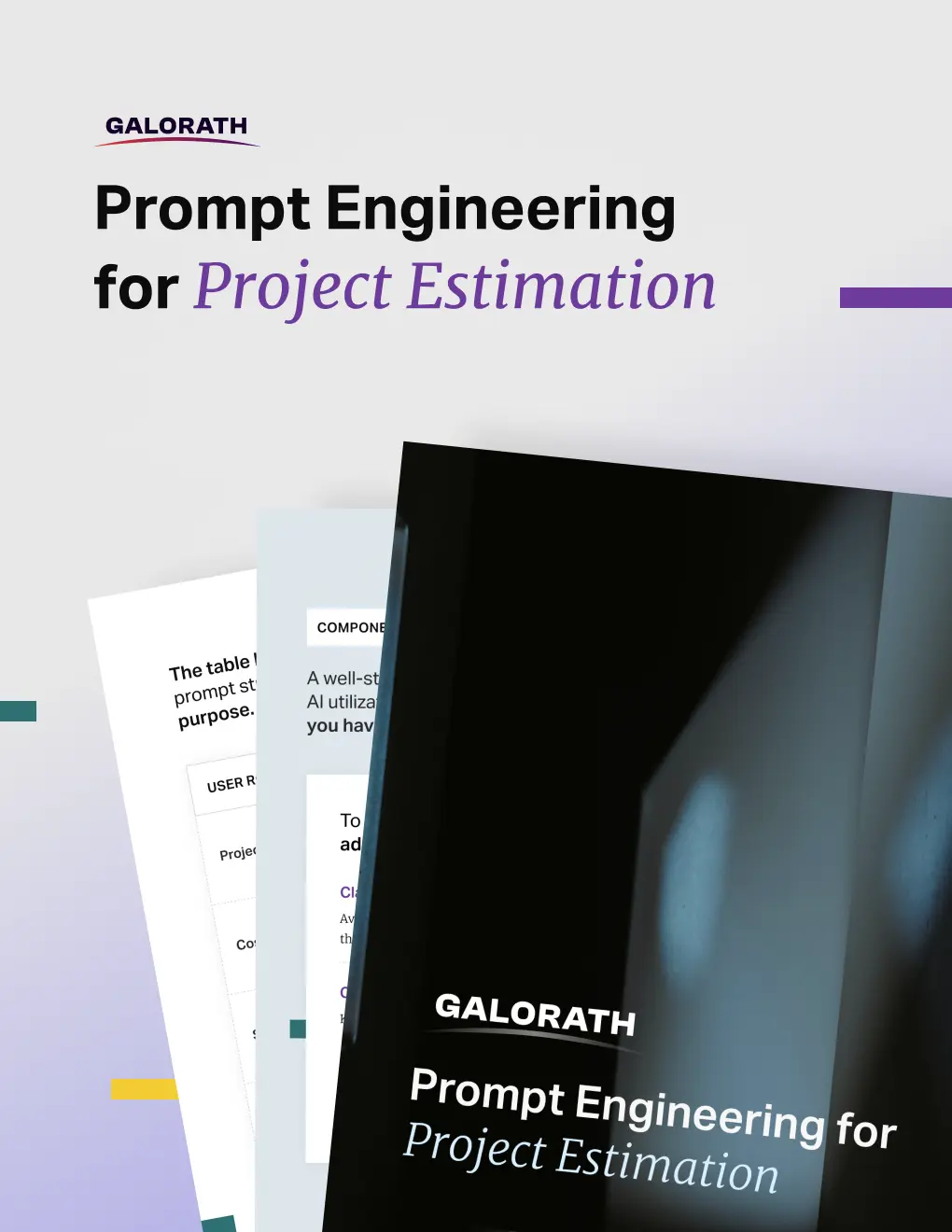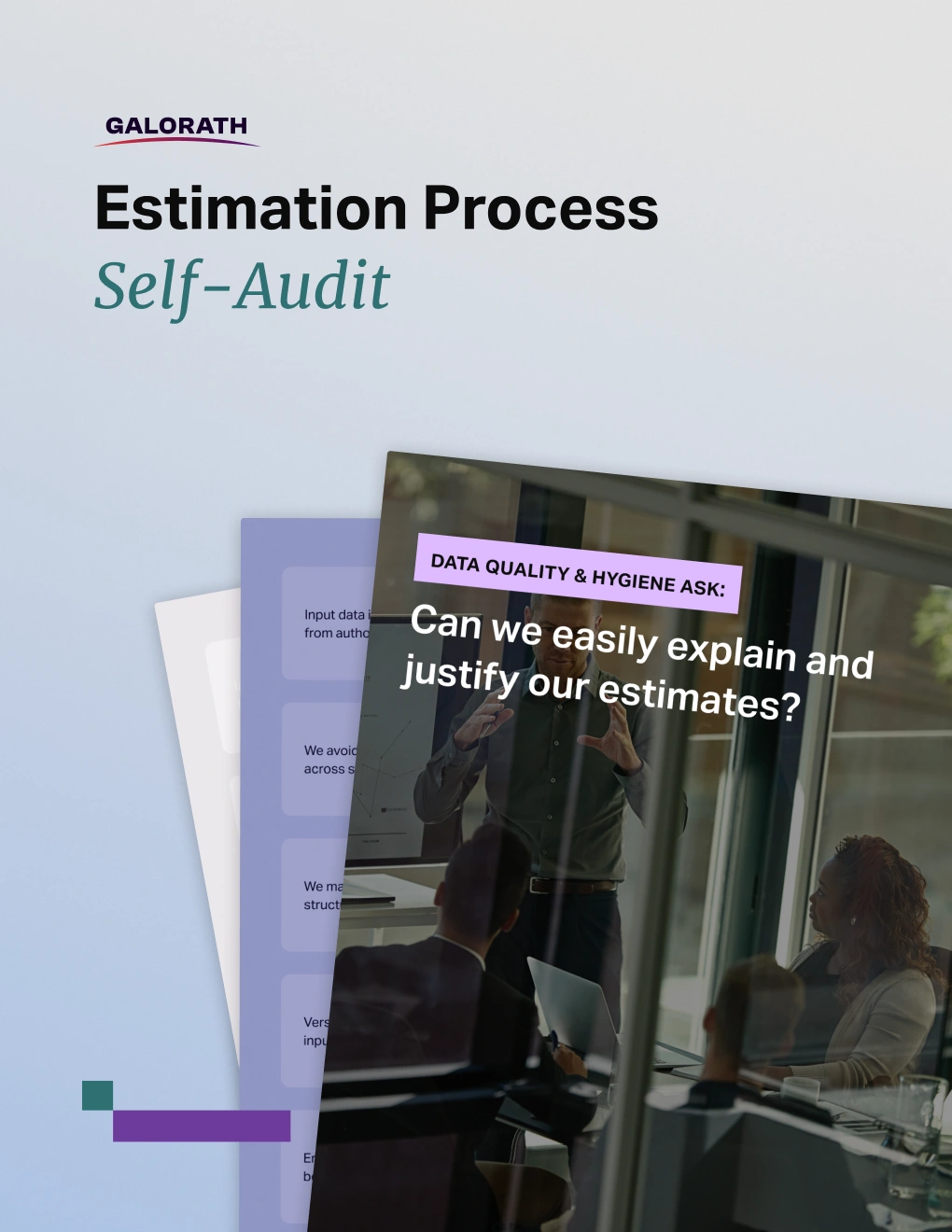Mastering Cost Risk with the CRED Model: A New Approach to Managing Uncertainty
A Cost Breakdown Structure maps every program dollar to scope, schedule, and resources, creating a hierarchical cost model tied to the Work Breakdown Structure. This CBS to WBS mapping links each deliverable to a budget and a control account, which feeds EVM metrics like PV, EV, AC, CPI, and SPI for day to day control and audit trails.
Regulated programs mandate this level of traceability, and the practice is widely adopted across industry sectors. Standards like DoDI 5000.73, MIL-STD-881F, FAR 15.404-1(c), DFARS, and GAO-20-195G set expectations for documented cost elements, inflation assumptions, and defensible estimates. CCDR reporting to CADE depends on a clean CBS so cross-program analysis stays consistent and repeatable, even when teams change.
Cost Breakdown Structure content separates direct, indirect, and programmatic cost. Direct cost covers labor, material, conversion, and subcontract with BOM traceability. Indirect cost covers overhead, G&A, and site logistics under CAS-consistent allocation. Programmatic cost adds contingency, escalation, and fee or financing where applicable. CBS supports cost estimation by converting quantities, rates, and schedule into traceable bottoms up totals and realistic ranges.
Cost Breakdown Analysis tests each CBS element for reasonableness and should-cost. Analysts apply parametrics and CERs to benchmark bids and bottom up builds. Quantitative risk analysis with Monte Carlo sets P50 to P80 reserves, so the baseline reflects known uncertainty. CBA matters because it finds cost drivers early and activates levers like design to cost, make-buy changes, rate negotiations, and learning curve fixes that reduce recurring and NRE spend without hurting performance.
What is a Cost Breakdown Structure (CBS)?
A Cost Breakdown Structure (CBS) (also referred to as a costing breakdown) is a hierarchical, authoritative framework that decomposes the total cost of a program through systematic project-level cost decomposition.
At its core, a CBS serves as a systematic representation of all project costs, typically aligned with a Work Breakdown Structure (WBS) in a process known as WBS vs CBS mapping. While a WBS decomposes the work or deliverables of a program, the CBS breaks down the associated costs, such as labor, materials, subcontracting, and overhead, into traceable categories.
This dual structure ensures alignment between deliverables and their associated costs, establishing a foundation for estimation, cost breakdown structure (CBS), program budgeting, and audit defense.
What is the primary purpose of Cost Breakdown Structure?
The primary purpose of a Cost Breakdown Structure (CBS) is to create a detailed and hierarchical representation of all project costs. A CBS ensures estimates are comprehensive, traceable, and defensible by organizing costs into manageable components linked to project deliverables and tasks.
In regulated industries, such as aerospace, defense, nuclear energy, and pharmaceuticals, this traceability is not optional. Traceability is required for demonstrating CBS compliance with DoD 5000.73 and other government mandates. A well-structured CBS facilitates alignment with internal governance, contractor reporting structures (e.g., Contractor Cost Data Reports [CCDR], Cost Assessment Data Enterprise [CADE]), and NASA’s Cost Estimating Handbook.
The U.S. Government Accountability Office (GAO) explicitly identifies a documented cost breakdown as a key attribute of a high-quality estimate. According to the GAO Cost Estimating and Assessment Guide:
“A reliable cost estimate is comprehensive, well-documented, accurate, and credible. It includes a technical baseline description, a work breakdown structure (WBS), and an accompanying cost element breakdown that accounts for all program components.”
(GAO-20-195G, 2024)
Each CBS level corresponds to increasing levels of granularity, often structured to match contract phases (e.g., development, production, sustainment) and mapped to specific cost elements.
The result is a clear, Cost breakdown structure is hierarchical map that not only improves estimation accuracy but also supports risk assessment, lifecycle costing, and Earned Value Management (EVM). In practice, the CBS is more than an accounting exercise. It is an engineering-informed, compliance-aligned representation of a program’s financial anatomy, foundational to successful program execution.
How exactly is the CBS Related to the Work Breakdown Structure (WBS)?
The Cost Breakdown Structure (CBS) is related to the Work Breakdown Structure (WBS) as its direct financial counterpart: the WBS defines what work will be done, while the CBS defines how much that work will cost, enabling up to 95% accuracy in cost allocation for EVM compliance. This essential CBS and WBS integration creates a unified framework for program control, as mandated by standards like MIL-STD-881F.
The direct mapping of WBS elements to CBS cost accounts ensures that every piece of work has a corresponding budget and can be tracked for performance, forming the non-negotiable foundation for a compliant EVMS.
The WBS, which must maintain work breakdown structure compliance with standards like MIL-STD-881F, is the product-oriented decomposition of a project’s total scope. In contrast, the CBS is a cost-oriented framework providing one of the most effective and structured cost allocation methods. A foundational best practice is the direct linking of CBS to WBS cost accounts. This alignment enables precise cost tracking across WBS levels, ensuring every deliverable has an associated budget.
This meticulous CBS-WBS alignment for program managers is indispensable, as it provides the non-negotiable foundation for a compliant EVMS with CBS and WBS. The integration links each Work Breakdown Structure (WBS) element to a corresponding cost account, forming the basis for Earned Value Management (EVM) metrics such as Planned Value (PV), Earned Value (EV), and Actual Cost (AC).
Parametric estimation tools capitalize on this structure, with SEER’s integration into WBS elements serving as a prime example. This supports advanced parametric cost mapping to WBS, ensuring that cost estimation is both repeatable and audit-ready in regulated environments.
When Is a Cost Breakdown Structure Used in Projects?
A Cost Breakdown Structure (CBS) is used at key decision points throughout a project’s lifecycle, from early concept planning to final sustainment. It plays a critical role during:
- Initial Planning and Budgeting: CBS helps define high-level cost categories and align them with project scope, enabling more accurate rough order of magnitude (ROM) estimates.
- Design and Development: As the design evolves, the CBS is refined to allocate costs to specific subsystems, components, or activities—supporting trade-off decisions and cost optimization.
- Procurement and Contracting: CBS structures are used to evaluate supplier bids, structure contracts, and ensure consistency in reporting and compliance.
- Execution and Monitoring: During implementation, CBS enables detailed tracking of actual costs versus planned budgets, supporting earned value management (EVM) and financial oversight.
- Sustainment and Lifecycle Management: Post-deployment, CBS supports long-term cost forecasting for maintenance, upgrades, and support activities.
CBS is especially critical in regulated, high-stakes sectors like defense, space, energy, and infrastructure. In these environments, it’s not just a best practice, it’s often a formal requirement for programs such as:
- Major Defense Acquisition Programs (MDAPs)
- NASA space and satellite programs
- Department of Energy infrastructure initiatives
What Are the Main Components of a Cost Breakdown Structure?
The main components of a Cost Breakdown Structure are organized into three primary categories: direct costs, indirect costs, and other programmatic costs. This hierarchical CBS component modeling provides the framework for a complete EVM-based cost categorization.
A fundamental principle is the clear distinction between direct vs indirect costs CBS, with each expense traced through a detailed WBS to cost element mapping to ensure every dollar is accounted for and auditable.
Direct Costs
Direct costs are expenditures that can be clearly and exclusively attributed to a specific project task, product, or deliverable. They typically fall into four main categories: labor, materials, conversion costs, and subcontractor expenses. This detailed labor and material cost breakdown, captured through meticulous WBS to cost element mapping, forms the primary basis of a program’s bottom-up estimate and provides transparent traceability for earned value reporting and contract pricing.
Labor cost represents the fully burdened expenditure for human resources directly performing project work, such as engineering, manufacturing, and testing. The Cost Breakdown Structure (CBS) categorizes these costs by specific roles (e.g., systems engineer, avionics technician) and teams (e.g., propulsion design vs. software integration). The financial values are derived from fully burdened labor rate structures that include fringe benefits, overhead, and other allocated expenses, ensuring every hour charged is traceable and justifiable.
Material cost encompasses the procurement of all physical goods, components, and complete systems required to execute the program. This includes everything from long-lead assemblies such as airframes and propulsion units to individual microchips and consumable items. A critical function of the CBS in this area is ensuring end-to-end cost traceability, where each material line item can be tracked back to vendor quotes, bills of materials (BOM), or historical procurement data.
Conversion cost estimation captures the direct expenses incurred during the transformation of raw materials and subcomponents into a fully integrated and operational system. These are neither material nor labor costs, but rather the costs associated with the transformation process itself, including critical activities such as system integration in specialized facilities, hardware-in-the-loop testing, and final system validation against MIL-SPEC or NASA standards.
A detailed subcontractor cost analysis is required to account for all third-party deliverables and external vendor services contracted from outside organizations. This includes specialized engineering support, fabrication, and IT services for classified programs. This costing must be handled with precision to ensure compliance with the ITAR compliance context, especially for export-controlled technologies. All subcontractor line items must be supported by vendor cost breakdowns and task order mappings to meet government audit requirements and fulfill Contractor Cost Data Report (CCDR) submission standards.
What is a Direct Cost Breakdown Analysis?
A Direct Cost Breakdown Analysis is a focused application of CBA that specifically scrutinizes these direct expenses to determine their reasonableness, efficiency, and direct traceability to project deliverables, representing a critical initial step in broader cost reduction strategies.
Indirect Costs
Indirect costs are expenses necessary for business operations that are not directly attributable to a single project but are systematically allocated across multiple programs, typically representing 15-25% of a program’s total cost.
These include two primary types: Overhead & Administration Cost and Site Facilities & Logistics. Effective tracking of indirect overhead is essential for preserving the distinction between direct and indirect costs within the CBS and for ensuring regulatory compliance.
Overhead and administration costs represent the shared corporate expenses required to run the business, covering facility usage, regulatory compliance, and general business support service allocation. This includes the costs of executive management, human resources, legal services, and corporate IT infrastructure, which are allocated across all active programs. Cost allocation methodologies must comply with government Cost Accounting Standards (CAS) and be applied consistently across the program.
The process of logistics and facilities costing accounts for project-related support expenses that are not part of the final deliverable itself, including costs for shipping, equipment maintenance, and specialized tooling support. This category includes expenses for program-dedicated facilities (like a secure assembly cleanroom), ground support equipment, specialized production tooling, and the transportation and logistics required to move components or the final system to testing sites or deployment locations.
Other Programmatic Costs
Other programmatic costs are critical cost elements in a Cost Breakdown Structure (CBS) that account for financial risks, economic factors, and unique funding needs over a program’s multi-year lifecycle, typically representing 5-20% of total costs.
While standards like DoD 5000.73 formalize the treatment of programmatic costs in U.S. defense programs, the practices of including other programmatic costs, such as contingency, inflation, and financial costs in a Cost Breakdown Structure, are applicable across industries and geographies.
From aerospace and energy to commercial infrastructure and software systems, these cost elements help ensure that budgets are realistic, future-proofed, and capable of absorbing uncertainty, making them critical for any organization engaged in multi-year planning or capital-intensive projects.
Contingency Cost
The contingency cost is a budgeted amount representing risk-adjusted reserves, funds set aside to cover the potential cost impact of identified technical, schedule, and programmatic risks. This is not an arbitrary management reserve but a calculated value derived from a formal Quantitative Risk Analysis (QRA), often linking to a Monte Carlo simulation run against the CBS.
This provides a statistical basis for forecasting the funds required to handle foreseeable project uncertainties with a given level of confidence. For example, in the aerospace industry for the F-35 program, contingency reserves were established at 15% for development phases and 8% for production, based on a Monte Carlo analysis of technical and schedule risks.
Escalation and Inflation
To create a realistic budget for multi-year acquisitions, programs must use an inflation-adjusted cost structure. Escalation, or inflation, accounts for the anticipated rise in labor and material costs over time due to economic factors.
According to DoD Instruction 5000.73, all program cost estimates must:
“Clearly document inflation assumptions and escalation indices applied, and show the cost impact across Base Year and Then-Year dollars.”
Escalation is typically applied by cost element using standardized indices, such as OUSD CAPE inflation tables or service-specific escalation guidance. These adjustments ensure that estimates reflect the true “then-year” cost burden, supporting Planning, Programming, Budgeting, and Execution (PPBE) decisions.
Financial Costs
While less common in traditionally appropriated government programs, financial costs can be a relevant category in certain contract structures or public-private partnerships. This category is used to briefly cover the cost of capital, such as interest expenses incurred on loans used to finance program development, facilities, or large-scale equipment purchases before customer payments are received.
What is Cost Breakdown Analysis (CBA)?
Cost Breakdown Analysis (CBA) is the analytical process of assessing individual cost elements within a Cost Breakdown Structure (CBS) to ensure their reasonableness, completeness, and realism. This process uses a variety of cost breakdown analysis methods to achieve component-level cost transparency. Its effectiveness relies entirely on a detailed CBS, using that structure to scrutinize each cost driver and validate the overall estimate.
In government procurement, Cost Breakdown Analysis is the engine behind the “should-cost” management approach and a cornerstone of CBA aligned with FAR compliance. The Federal Acquisition Regulation (FAR) and its defense supplement (DFARS) require contracting officers to perform detailed cost analysis to ensure a contractor’s proposed pricing is justified.
This often involves a detailed supplier cost justification analysis, for which CBA is the primary tool. Parametric modeling and other CBA tools for cost engineers are invaluable in this process, enabling analysts to benchmark proposed costs against independent, data-driven estimates.
For high-cost, complex acquisitions in aerospace, defense, and space exploration, CBA is indispensable. It moves beyond simple price comparisons to a forensic examination of why a system costs what it does, identifying cost reduction opportunities and assessing technical and financial risks. This level of scrutiny is essential for managing multi-billion-dollar CBAs in fixed-price contracts and ensuring taxpayer funds are spent responsibly on major defense programs.
How Are CBS, CBA, and Other Breakdown Structures Different?
In program management, various hierarchical structures are used to manage cost, scope, and resources. Understanding the distinct purpose of a Cost Breakdown Structure (CBS) compared to other analytical frameworks is crucial for accurate estimation and strategic decision-making. This section clarifies these critical distinctions, providing an integrated cost analytics framework for professionals.
What is the difference between Cost Breakdown Structure and Cost Breakdown Analysis?
The fundamental distinction is that a CBS is a structural tool, while CBA is an analytical process. The CBS provides the detailed framework (the “anatomy” of costs) by organizing all program expenses into a logical, hierarchical format. CBA, in contrast, is the active “diagnosis” of that anatomy.
The workflow is sequential: the CBS provides the structured data, and the CBA uses that data to generate insights. This relationship makes the CBS a cost analysis baseline indispensable, enabling detailed cost validation for government buyers and ensuring defense contractor cost transparency.
How Does CBS Differ from a Resource Breakdown Structure (RBS)?
The main difference between a CBS and a Resource Breakdown Structure (RBS) is focus: a CBS quantifies the cost of all project elements, while an RBS categorizes the types and amounts of resources needed to perform the work, such as personnel, equipment, or materials.
While both structures are critical to project management, the Resource Breakdown Structure (RBS) defines the resources required, whereas the Cost Breakdown Structure (CBS) details the cost associated with those resources.
How is Cost Breakdown Structure Different from a Tear-Down Analysis?
The key distinction between a Cost Breakdown Structure (CBS) and a teardown cost comparison lies in their temporal focus: CBS is forward-looking, used for planning and estimating within internal program control, whereas teardown analysis is retrospective, involving the physical disassembly of a competitor’s product to reverse-engineer manufacturing costs. Teardown provides a product-level cost breakdown for competitive intelligence rather than project-based budgeting.
How is Cost Breakdown Different from a Price Breakdown?
The distinction between a price structure and a cost breakdown is crucial in procurement and contracting. A CBS represents the internal cost to the performing organization – the total expense incurred to deliver the product or service. A price breakdown, conversely, represents the external price charged to the customer.
This price includes the seller’s internal cost plus profit, fee, and other strategic pricing adjustments. This contrast between pricing strategy vs cost modeling is fundamental; government buyers perform detailed Cost Analysis on a supplier’s CBS, which is far more rigorous than a simple Price Analysis that only compares final prices.
What Are the Benefits of Performing a Cost Breakdown Analysis?
A rigorous Cost Breakdown Analysis (CBA) provides five primary benefits: clear cost visibility, enhanced procurement transparency, improved budget control, guaranteed compliance, and strategic sourcing. Together, these advantages transform cost estimating from a reactive reporting function into a proactive decision-making tool for high-value aerospace, defense, and government programs.
Clear Cost Visibility
Cost breakdown analysis dissects each cost element within the Cost Breakdown Structure (CBS), revealing the composition and drivers behind program expenditures. This detailed cost data visibility for PMs and analysts allows tracing every dollar to its function, resource, or deliverable, eliminating black-box estimates and enabling informed trade-offs in program planning. This provides actionable cost insights for engineers and program managers.
Enhanced Procurement Transparency
Cost breakdown analysis is instrumental during contract negotiations and supplier evaluations. It allows government buyers to request and assess supplier cost breakdowns, identify inflated line items, and challenge unsupported assumptions. This transparency in defense procurement supports the enforcement of FAR 15.404-1(c) cost realism requirements and ensures that subcontractor pricing aligns with government expectations. This process enables contract pricing verification and strengthens supplier price justification methods.
Improved Budget Control
By mapping costs to specific work packages and control accounts, Cost breakdown analysis enables precise budget tracking and allocation. When integrated with Earned Value Management Systems (EVMS), it allows for continuous variance analysis and correction. This contributes to tighter cost control and directly supports the reduction of budget overruns across the program lifecycle.
Guaranteed Compliance
Cost breakdown analysis supports audit-readiness in government programs and meets the documentation expectations of agencies like the GAO, DoD, and NASA. It ensures that all costs are well-substantiated, aligned with program scope, and supported by historical data or parametric models. This is critical for passing reviews, maintaining funding approval, and enhancing overall DoD-acquisition cost visibility.
Strategic Sourcing
Beyond compliance, Cost breakdown analysis empowers acquisition teams to optimize sourcing strategies. By analyzing the cost drivers behind each component or service, decision-makers can identify opportunities for consolidation, re-competition, or alternative sourcing. This directly enables procurement decision support via Cost breakdown analysis and drives long-term affordability and mission-aligned investment decisions. CBA also provides CBA for risk-informed pricing, guiding more strategic investment choices.
In short, CBA elevates cost estimation from static documentation to a dynamic, compliant, and insight-rich practice that supports both financial stewardship and mission success.
What Role Does CBS Play in Estimation, Budgeting, and Cost Control?
The Cost Breakdown Structure (CBS) is a fundamental instrument across the entire program lifecycle, playing a critical role in cost estimation, budgeting, and comprehensive cost control. It establishes the essential cost tracking structure for EVMS and forms the backbone of CBS-enabled program cost controls for complex aerospace and defense acquisitions.
In Estimating and Pricing
The Cost breakdown structure provides the granular detail essential for estimation accuracy with CBS across all levels of maturity, from early-stage to definitive. The level of detail within the CBS directly informs the accuracy ranges of cost estimates.
Industry best practices, such as those from the Project Management Institute (PMI), define accepted accuracy ranges for different estimate types:
“Rough Order of Magnitude (ROM) estimate range is -25% to +75%, Budget Estimate range is -10% to +25%, and Definitive Estimate range is -10% to +10%.”
The granular detail provided by a comprehensive CBS is essential for achieving these tighter accuracy ranges, particularly for definitive estimates, by enabling precise cost element forecasting and linking cost estimation directly to budget for greater realism.
- Rough Order of Magnitude (ROM) estimates typically rely on a high-level CBS structure with top-level categories (e.g., labor, materials) for early conceptual planning.
- Budget Estimates require a moderately detailed CBS aligned to major WBS deliverables and cost element forecasting structure.
- Definitive estimates require the deepest level of CBS decomposition, typically down to the Control Account (CA), to ensure traceable and auditable inputs for acquisition reviews, Independent Government Cost Estimates (IGCEs), and should-cost analysis. This detailed structure facilitates a more robust baseline, crucial for defensible pricing proposals and government reviews, ultimately linking cost estimation to budget and achieving CBS and procurement approvals.
In Budgeting and Financial Planning
The Cost breakdown structure is paramount in financial planning, as it defines how program funds are organized, allocated, and managed. It provides the detailed framework for setting the program budget and establishing control accounts, which are the building blocks for Earned Value Management. This structured approach underpins CBS in defense budgeting, allowing for the precise allocation of funds to specific deliverables, phases, or work packages. It also supports the creation of a risk-adjusted budgeting structure, where contingency funds are identified and assigned within the CBS, ensuring a realistic financial baseline.
In Cost Control and Tracking
For ongoing program execution, the CBS is the primary tool for cost control and tracking, enabling real-time monitoring of actual expenditures against the approved budget. The direct mapping of the CBS to the Work Breakdown Structure (WBS) allows for granular cost collection and comparison.
Enterprise project management tools like Primavera and MS Project are configured to track actual costs against specific CBS elements, giving program managers ongoing visibility into fund utilization. This systematic approach forms the bedrock for identifying and addressing cost deviations promptly.
Integration with the WBS ensures that actuals can be reported at granular levels (by component, subcontractor, or technical effort), supporting variance identification and corrective action planning. This linkage is particularly vital for Major Defense Acquisition Programs (MDAPs) and classified systems, where cost visibility is required for internal and external audits.
In Variance Analysis and Earned Value Management (EVM)
The Cost breakdown structure plays a central role in executing Earned Value Management (EVM) and supports the ongoing variance analysis by linking cost data to project performance metrics. It supplies the structure needed to calculate performance metrics such as:
- Cost Performance Index (CPI) = Earned Value / Actual Cost
- Schedule Performance Index (SPI) = Earned Value / Planned Value
Because CBS accounts are directly tied to WBS and work packages, these metrics can be tracked at both the project-wide and control account levels. This directly supports the use of CBS in earned value metrics, enabling program teams to assess both the magnitude and root cause of deviations from the planned baseline.
For defense programs for example, CBS-structured data is submitted through Contractor Cost Data Reports (CCDRs) to the Cost Assessment Data Enterprise (CADE), where it informs cross-program analysis, benchmarking, and acquisition planning. CBS-aligned cost reporting ensures audit traceability, enhances data integrity, and supports the development of future parametric cost models.
How is CBA Used as a Strategic Tool for Cost Reduction?
Cost Breakdown Analysis (CBA) is a strategic cost-reduction tool that identifies and analyzes cost drivers within the Cost Breakdown Structure (CBS) to uncover inefficiencies, eliminate unnecessary expenses, and support should-cost positions. This approach enables program and acquisition teams to move beyond passive cost tracking into active cost management, supporting defensible pricing and affordability optimization throughout the program lifecycle.
CBA transforms the CBS into a robust decision-support framework. Cost Breakdown Analysis quantifies what each element should cost using historical data, technical inputs, and benchmarking, giving contracting teams critical visibility into cost drivers across labor, materials, subcontractor services, and production workflows.
In complex aerospace and defense programs, extended timelines and vast supplier ecosystems significantly elevate the consequences of early cost decisions, making early and accurate cost-benefit visibility essential.
What is a Supplier Cost Breakdown Analysis?
A Supplier Cost Breakdown Analysis (CBA) entails dissecting a vendor’s proposed price by examining detailed cost elements, such as labor, materials, overhead, profit, and more, in order to assess whether a bid is reasonable and justified. This practice is a cornerstone of supplier cost transparency.
In U.S. federal procurement, especially in non‑competitive contracts, contracting officers and acquisition analysts are required under FAR 15.404‑1(c) to evaluate cost realism and reasonableness. In these scenarios, a thorough CBA isn’t optional—it’s mandated to support negotiation, challenge unsupported rates, and defend the government’s position.
Furthermore, a well‑structured supplier CBA feeds into Independent Government Cost Estimates (IGCEs) and “should-cost” analyses used across defense and other major programs. In regulated acquisitions, this approach is not just best practice, it’s also part of the compliance regime for cost modeling, bid validation, and cost rationalization.
What is a Production Cost Analysis?
Production Cost Analysis is the application of CBA techniques to evaluate and optimize the recurring costs of manufacturing, including yield rates, throughput efficiency, scrap, rework, and labor utilization. It is a vital component of a broader CBA for strategic cost reduction.
This analysis focuses on identifying high-cost process drivers that impact unit cost during low-rate and full-rate production phases. By conducting this analysis, organizations can implement targeted improvements such as design for manufacturability (DFM), automation upgrades, or process standardization, leading to significant cost efficiency gains.
In long-term or performance-based contracts, production CBA supports continuous performance-based cost scrutiny and enables predictive cost control across the production lifecycle. This directly translates into an effective parametric cost optimization strategy.
Steps to create and format a Cost Breakdown Structure
Creating and formatting a Cost Breakdown Structure (CBS) is a systematic process that transforms a program’s technical scope into a manageable financial framework. This essential phase involves deliberate steps and adherence to established formats to ensure the resulting CBS is accurate, auditable, and effective for CBS planning for program maturity across the acquisition lifecycle.
A well-constructed CBS is critical for achieving cost coding for audit compliance and seamless integration into project control systems.
What Are the Common Formats for a CBS?
The common formats for a CBS are primarily structured in two ways: aligned to the Work Breakdown Structure (WBS) or by resource/cost category. Each approach serves distinct but complementary purposes in program financial management.
Cost Breakdown Aligned to WBS
This is the industry-standard CBS format option for complex programs, particularly within aerospace and defense. The WBS-aligned CBS format creates a direct, hierarchical link between deliverables and their associated costs. It mirrors the MIL-STD-881F WBS levels and numbering system, ensuring that every element of work has a corresponding cost account.
This results in a clear tree-structured cost breakdown with an outline numbered CBS structure, which is invaluable for precise CBS mapping in MS Project or CBS templates in Primavera. This format facilitates CBS documentation for CADE and is the foundation for Earned Value Management.
Cost Breakdown by Resource/Cost Category
This alternate view organizes costs by primary cost elements such as labor, material, equipment, and indirect costs, rather than strictly by WBS elements. It provides a functional roll-up for financial reporting and indirect rate analysis.
While this format is frequently implemented in spreadsheets or general ledger exports, many modern systems dynamically generate it from a WBS-aligned CBS, allowing for dual views of the same data for both program control and executive-level financial oversight.
7 steps of Creating a Cost Breakdown Structure
Creating a robust Cost Breakdown Structure involves a systematic process of defining objectives, leveraging the WBS, assigning costs, and validating the structure.
These are the 7 steps to build CBS with accuracy and compliance:
1. Define Project Objectives & Scope
Begin by clearly understanding the program’s strategic objectives, contract type, and the full lifecycle scope (e.g., development, production, sustainment). This initial clarity guides the subsequent alignment of the CBS with acquisition phases and determines the level of detail required for the estimate.
2. Establish the WBS as the Foundation
The approved program WBS is the indispensable starting point. The CBS directly maps to the WBS, making mapping costs to WBS the critical second step. This ensures costs are tied to tangible deliverables and enables proper alignment with Control Accounts.
3. Select Format & Coding Structure:
Choose a CBS format (WBS-aligned, cost category, or hybrid) and implement a consistent numbering scheme (e.g., 1.1.2.3) for hierarchical navigation. This supports seamless integration with cost tools, ensures accurate data export, and establishes a repeatable structure for future audits, streamlining the CBS template development process.
4. Assign All Cost Elements:
Populate each CBS node by defining cost elements clearly for each WBS component. This includes all direct costs (labor, material, subcontract), indirect costs (overhead, G&A), and programmatic costs (contingency, escalation). For enterprise tools, this means assigning costs in Primavera or setting up the CBS setup in MS Project.
5. Validate Against Historical Data & Parametric Models:
Perform CBS validation with historical data from similar past projects to ensure realism. Utilize parametric estimation tools (such as SEER) to cross-check bottom-up estimates, identifying potential outliers or areas requiring further investigation.
6. Incorporate Risk-Based Contingency & Escalation
Integrate a calculated, risk-based contingency (derived from quantitative risk analysis) and apply appropriate escalation/inflation factors. This ensures the CBS reflects total expected costs in future-year dollars, with specific configuration of CBS for O&S phases being crucial for long-term programs..
7. Implement in a Project Control Tool:
Load the CBS into an enterprise system such as Primavera P6, Microsoft Project, or Deltek Cobra. This enables ongoing cost tracking, variance analysis, and schedule integration, transforming the CBS from a static estimate into a dynamic management and reporting instrument.
How is Cost Breakdown Analysis Connected to Parametric Estimating?
Cost Breakdown Analysis (CBA) is intrinsically linked to parametric estimating, leveraging historical data and statistical models to predict costs for new or evolving programs. This connection transforms a static CBS into a dynamic, predictive tool.
Parametric models in cost analysis are statistical relationships that estimate costs based on program characteristics (e.g., weight, power, lines of code) rather than detailed bottom-up buildups.
The development of credible Cost Estimating Relationships (CERs) is directly fueled by detailed historical data for CERs extracted from past program CBS records. A well-structured CBS provides the clean, traceable historical cost data necessary for regression analysis for CBA to identify statistically significant correlations between program attributes and cost drivers.
These CERs enable predictive cost modeling techniques that can forecast costs for future projects, even with limited design detail. The application of TRL-based cost factor adjustment allows parametric models to account for technological maturity, improving forecast accuracy.
Furthermore, CBA using parametric databases provides a robust means for validating bottom-up estimates, identifying outliers, and performing rapid “what-if” analyses. The output often includes uncertainty analysis using CERs, yielding probabilistic cost ranges (e.g., P80 estimates) for better risk management. This entire process enhances data-driven estimation workflows across the acquisition lifecycle and supports sophisticated cost curve modeling for aerospace and defense programs.
How SEER by Galorath Supports CBS/CBA through Parametric Modeling?
Integrated tools such as SEER by Galorath are engineered to automate and validate Cost Breakdown Structure generation and analysis through powerful parametric modeling. SEER, a leading cost modeling software, enables the rapid development of initial CBS structures by integrating pre-built templates and industry-standard hierarchies.
Leveraging extensive historical databases, parametric modeling in SEER builds and refines CER creation in SEER, which are then applied to program characteristics to generate detailed cost estimates.
This provides estimation accuracy with SEER inputs and enables granular cost tree modeling using SEER that directly aligns with CBS principles. Furthermore, digital twin integration with SEER enables dynamic cost updates based on changes in engineering models, facilitating rapid sensitivity analysis through SEER and providing SEER outputs for acquisition reports that support program-level forecasting with SEER.
This systematic approach, with SEER support for WBS alignment and historical database calibration in SEER, generates CADE-ready outputs from SEER, streamlining reporting and enhancing estimate defensibility.
What Government Compliance Standards Govern CBS & CBA?
Mastering CBS and CBA in aerospace and defense necessitates a deep understanding of the rigorous government compliance standards that dictate their structure, content, and application. These standards ensure audit-readiness in government programs and promote transparency in defense procurement. Each contributes unique compliance, auditability, and methodological rigor:
- DoD Instruction 5000.73: Cost Analysis Guidance and Procedures: This instruction establishes comprehensive cost analysis requirements for defense acquisition programs. It mandates traceable, structured estimates, driven by CBS frameworks, and defines procedures for Independent Cost Estimates (ICE) and should-cost reviews, directly influencing DoD-acquisition cost visibility.
- FAR/DFARS (Federal Acquisition Regulation and Defense Supplement): FAR Part 15.404-1(c) requires cost analysis when certified pricing data is used. DFARS expands on this, requiring defensible cost realism assessments, making CBA and CBS foundational to source selection and contract negotiation. These regulations heavily influence contract pricing verification and procurement decision support via CBA.
- GAO Cost Estimating and Assessment Guide: This guide identifies a “well-documented cost estimate” as one that includes a hierarchical CBS. It outlines best practices for CBA use in budget justification and program lifecycle cost insight, ensuring cost data visibility for PMs and enhancing overall CBS-driven spend accountability.
- AACE International Recommended Practices: These provide AACE classification for CBS (e.g., Recommended Practice 18R-97), offering classifications for cost estimate maturity (Class 5 to Class 1) and recommending structured CBS formats for budgeting, cost control, and contingency analysis.
- ICEAA (International Cost Estimating and Analysis Association): This organization offers training and certification standards that align CBS/CBA processes with statistical rigor, risk modeling, and government compliance expectations.
Together, these standards form the regulatory and methodological foundation for defensible cost estimation in aerospace and defense acquisition programs.
How Does Digital Engineering Integration Improve CBS & CBA?
Digital engineering (DE), particularly Model-Based Systems Engineering (MBSE) and Digital Twins, is transforming CBS and CBA from static reporting tools into dynamic, continuously updated cost estimation systems. This integration significantly enhances CBS integration with digital engineering workflows.
This immediate feedback loop enables cost engineers to perform rapid “what-if” analyses, providing higher confidence in estimates and improving the overall CBS usability in EVMS tools by reflecting the latest technical baseline.
MBSE allows the CBS to be directly informed by system architecture models, ensuring that cost structures are synchronized with evolving technical baselines. This supports real-time CBS alignment with system changes, such as component swaps, requirement changes, or design growth. This level of responsiveness improves the CBS usability in EVMS tools by ensuring that cost models reflect the latest technical baseline.
Digital Twins enable the tracking of operational performance, degradation, and maintenance in near real time. These data streams enhance Operations & Support (O&S) cost estimates and enable CBS elements to evolve with system usage, improving visibility into total program lifecycle costs. The integration of digital engineering reduces reliance on assumptions and enables dynamic cost modeling. This supports continuous CBA by linking cost drivers directly to design and performance data, significantly enhancing estimation accuracy, contingency justification, and “should-cost” modeling for future increments or block upgrades. This also informs SEER calibration for accurate cost categorization and enables real-time visualization of the CBS hierarchy, directly linked to the underlying engineering model.
How Are Risk and Uncertainty Integrated into the CBS?
Integrating risk and uncertainty into the CBS is paramount for realistic cost estimation in complex programs. This systematic approach ensures that the risk-adjusted budgeting structure accurately reflects potential cost impacts through risk tracking with CBS layers.
The Department of Defense explicitly mandates this level of risk integration, as stated in DoD Instruction 5000.73:
“All cost estimates conducted for DoD programs must: Include a discussion of risk, the potential impacts of risk on program costs, schedule, and approaches to mitigate risk.”
This clear directive underscores why robust quantitative methods, such as Monte Carlo simulations, are applied at the CBS level to provide a statistical basis for risk-informed budgeting and to justify contingency levels, ensuring the estimate is compliant and defensible.
The most common approach is the use of a Monte Carlo simulation. Here’s how it works:
- Each CBS element (e.g., labor hours, material units) is assigned a probability distribution (e.g., triangular, normal, lognormal) based on historical variance or expert input.
- Monte Carlo methods simulate thousands of cost scenarios by sampling from these distributions, aggregating results to produce probabilistic outcomes.
- The result is a range of total program costs with associated confidence levels (e.g., P50, P80, P90 estimates), which provides CBA for risk-informed pricing.
These outputs guide contingency levels, providing evidence-backed reserves that reflect technical, schedule, and cost risks. By applying Monte Carlo techniques at the CBS level, analysts ensure that risk-adjusted budgets and should-cost positions reflect data-driven realism, rather than arbitrary buffers, meeting expectations for cost realism analysis under FAR and DFARS.
Frequently Asked Questions About Cost Breakdown
What is the difference between a CBS and a Bill of Materials (BOM)?
A Cost Breakdown Structure (CBS) is a hierarchical representation of all program costs, encompassing labor, services, overhead, and contingencies. A Bill of Materials (BOM), by contrast, is a detailed list of physical components and subassemblies required to manufacture a product. While the BOM feeds into the CBS under the material cost category, the CBS is much broader, covering the full spectrum of cost elements essential for budgeting, pricing, and program-level cost control beyond just hardware procurement.
How does CBA differ from government Price Analysis?
Cost Breakdown Analysis (CBA) and Price Analysis serve distinct procurement functions. CBA is used when certified cost or pricing data is required (e.g., under FAR 15.404-1(c)) and involves analyzing individual cost elements (labor rates, overhead, materials) for reasonableness and realism. Price Analysis, on the other hand, assesses total price reasonableness without dissecting cost components, typically by comparing supplier bids or historical prices. In essence, CBA supports cost realism, while Price Analysis supports market reasonableness, making their comparison key to procurement decision support via CBA.
How can a CBS be used for Agile software projects?
In Agile software development the CBS can be adapted to align cost elements with epics, sprints, and capability drops. Instead of rigid work packages, the CBS is structured around Agile release cycles, labor categories (e.g., DevSecOps engineers, testers), and continuous integration activities. This enables traceable cost accumulation and supports Earned Value Management (EVM) metrics in hybrid Agile environments, bridging traditional oversight with modern delivery models. This allows software cost modeling examples to benefit from the CBS structure.
What is the role of the CBS in a formal Integrated Baseline Review (IBR)?
During an Integrated Baseline Review (IBR), the CBS plays a central role in validating the cost baseline’s integrity. Reviewers evaluate whether costs are fully traceable to the Work Breakdown Structure (WBS), aligned to the schedule, and accurately distributed across control accounts. A well-structured CBS ensures that each resource-loaded element in the baseline is properly scoped, priced, and justified, providing transparent cost data visibility for PMs and enabling robust risk assessments for program oversight.








